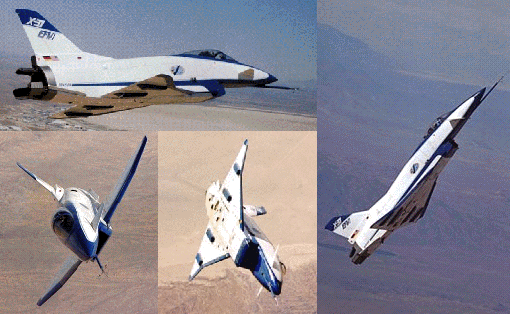 |
|||||
| Home | Research | For Teachers | HISTORY Level 1 Level 2 Level 3 |
PRINCIPLES Level 1 Level 2 Level 3 |
CAREER Level 1 Level 2 Level 3 |
| Gallery | Hot Links | What's New! | |||
| Web Administration and Tools | |||||
 |
|||||
| Home | Research | For Teachers | HISTORY Level 1 Level 2 Level 3 |
PRINCIPLES Level 1 Level 2 Level 3 |
CAREER Level 1 Level 2 Level 3 |
| Gallery | Hot Links | What's New! | |||
| Web Administration and Tools | |||||
![]()
We pointed out earlier that aircraft are able to sustain flight because of a balance among the four forces we've just discussed: lift, weight. thrust, and drag. When the aircraft is in the air and flying straight and level, we can assume that these four forces are in balance. But you may say, the aircraft has to get there somehow. So. what other types of aircraft motion are there besides straight, level, and unaccelerated flight?

At the end of this block of study, you should be able to:
![]() Identify the three axes of rotation.
Identify the three axes of rotation.
![]() Describe the surfaces and devices used to control the
flight of an aircraft.
Describe the surfaces and devices used to control the
flight of an aircraft.
![]() Explain how aircraft flight is controlled.
Explain how aircraft flight is controlled.
![]() Describe the basic flight maneuvers an airplane can make.
Describe the basic flight maneuvers an airplane can make.
![]() Identify the actions needed for carrying out basic flight
maneuvers.
Identify the actions needed for carrying out basic flight
maneuvers.
![]() Explain the cause and effect of a stall.
Explain the cause and effect of a stall.
| Section 5.1 - THE AXES OF ROTATION | |
| Section 5.2 - BASIC FLIGHT MANEUVERS | |
| Section 5.3 - TAKEOFF AND CLIMB | |
| Section 5.4 - LANDING | |
| Section 5.5 - STALLS | |
| Section 5.6 - REVIEW EXERCISE |
Send all comments to ![]() aeromaster@eng.fiu.edu
aeromaster@eng.fiu.edu
© 1995-98 ALLSTAR Network. All rights reserved worldwide.
| Funded in part by | From Civil Air Patrol Educational Materials |
Updated: February 23, 1999